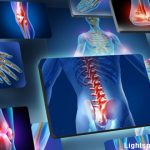NEW YORK (Reuters Health)—Pooled data indicate that bone mineral density (BMD) is significantly lower in patients with schizophrenia than in healthy controls, according to Taiwanese researchers.
Dr. Ping-Tao Tseng tells Reuters Health by email that the “evidence indicates the importance of further screening for the risk of osteoporosis in young-aged schizophrenic patients . . . especially in those taking prolactin-raising antipsychotics who are at high risk of fracture.”
In the November issue of Medicine, Dr. Tseng of Tsyr-Huey Mental Hospital in Kaohsiung City and colleagues note that it has not been possible to separate the effects of medication and of schizophrenia itself. Studies in drug-free patients or those receiving a short course of antipsychotics have had conflicting results.
To gain further information, the team did a meta-analysis of 13 studies comparing BMD of patients with schizophrenia and healthy controls. The eight studies that gave numbers of enrollees involved a total of 2,214 patients and 1,840 controls.
BMD was significantly lower in the patients than in controls. This remained the case when different age groups and different detection tools were employed.
The researchers then went on to analyze outcome in seven studies comparing BMD in 304 patients receiving prolactin-raising (PR) antipsychotics and 212 receiving prolactin-sparing (PS) antipsychotics.
The team found that BMD in the PR group was significantly lower than that in the patients receiving PS. These findings are in line with those of other researchers who found that hip fractures in the elderly increased in association with usage of first- and second generation antipsychotics.
However, the investigators stress that “our study can only point to the phenomenon that BMD in schizophrenic patients is lower than that in healthy controls, and cannot reveal any possible pathophysiology or mechanism of this phenomenon.”
Regardless, the researchers conclude that the finding “reminds us of the importance of possible comorbidity of schizophrenia, especially osteoporosis, when treating these patients.”
The authors declared no conflicts of interest.
